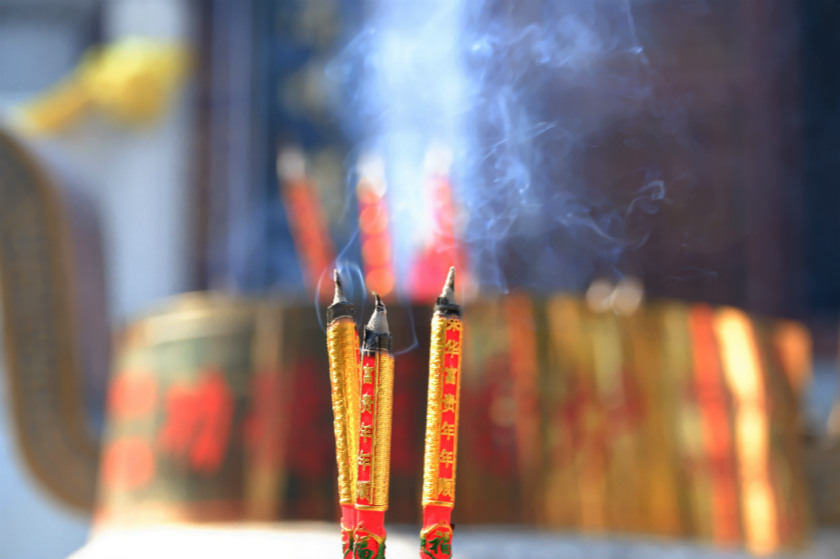Chinese Name: 云居寺 Pronunciation: Yúnjū Sì
Building Time: 605
Recommended Time for Visit: Half a day
Occupied Area: More than 70,000 square meters
Address: Shuitou Village, Dashiwo Town, Fangshan District, Beijing
Best Visiting Season: Spring to Autumn (From March to November)
Popular Activities: Local people coming to pray; Monks at the temple holding Buddhist activities.
Building Function: A place where Buddhist sutras and Buddhist cultural heritage were stored.
| Attraction | Price |
| Yunju Temple | 40 yuan |
| Shijing Mountain (an attraction inside Yuju Temple) |
15 yuan |
1. Children under 1.2 meters are free of charge.
2. The aged in 65 years or above with a valid certificate are free of charge.
| Temple Gate Opening Hours | 9:00-16:00 |
| Ticket Office Opening Hours | 9:00-15:30 |
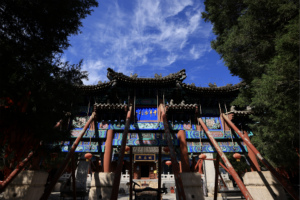
The Yunju Temple is located at the Shijing Mountain in Fangshan District, Beijing, 70 kilometers from the city center. The whole area, including the Yunju Temple and the Shijing Mountain, is a treasure with Chinese Buddhist cultural characteristics.
The 1400-year history of the Yunju Temple’s carving and construction dates back to the late Sui (581-618) and early Tang (618-907) Dynasties. The magnificent temple along the mountains and near the water, has been expanded and renovated over time.
The Yunju Temple is a national 4A level tourist attraction and a national key cultural relic protection unit.
In 631, the Yunju Temple was established.
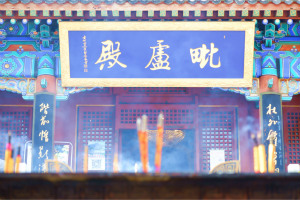
During the Jin (1115-1234), the Yuan (1271-1368), the Ming (1368-1644) and the Qing (1636-1912) Dynasties, the temple had been expanded and renovated.
In 1942, the temple was bombed and destroyed by Japanese invasion forces.
After 1949, the temple underwent two major renovations.
In the late 1950s, a team of archaeologists spent three years excavating and sorting the stone sutras and started studying the Fangshan stone sutras.
In October 1987, the Yunju Temple was opened to domestic and foreign visitors.
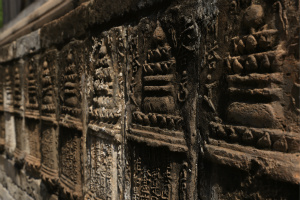
The Fangshan Stone Sutra was first carved in 605. The history of sutra carving went through six dynasties: the Sui, the Tang, the Liao (907-1125), the Jin, the Yuan, and the Ming Dynasties, and lasted for 1039 years. Now researchers have discovered a total of 14,278 pieces of sutra plates with complete sizes, and the number of words engraved on 1122 Buddhist sutras amounts to more than 35 million.
The stone sutras are preserved in two sites. There are 4,196 pieces stored in the nine sutra caves in the Shijing Mountain, and 10,082 pieces stored in the underground palace of a stone sutra. The Fangshan Stone Sutra is a cultural treasure of the Chinese nation and an extremely valuable world cultural heritage, with a high academic, cultural, and historical value.
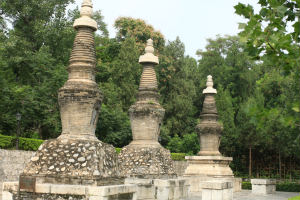
The Yunju Temple houses are not only the three great treasures of Buddhism and a thousand-year-old pagoda, but also the Buddhist relics, which have attracted worldwide attention. The word “Sheli” in Chinese is a Buddhist term meaning corpse or bones of departed eminent monk or Buddha. It is said that Sheli is a bead-shaped object formed after the cremation of the body of Sakyamuni.
On November 27, 1981, two red Sheli were unearthed from the Lei Yin Cave in the temple, which was the only Sheli in the world that has been kept in a cave rather than in the stupa, adding an auspicious glow to the thousand-year-old temple.
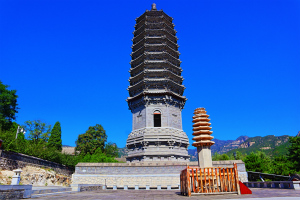
The ancient pagodas of the Tang Dynasty in the Yunju Temple are square, more than four meters high, and have seven stories.
The North Pagoda of the Yunju Temple was built in the Liao Dynasty (907-1125), with a height of 34.2 meters and a brick structure. The pagoda has an octagonal Sumeru base, and around the waist of the pagoda are carved music and dance figures of the Liao Dynasty, reflecting the cultural heritage of the Liao Dynasty and providing physical materials for the study of the Liao Dynasty music, dance, and other cultural arts.
The three pagodas on the north side of the North Pagoda are the tomb pagodas of the three hosts of the temple in the Qing Dynasty (1626-1912), so they are also called the Three Pagodas. Descendants built the three tomb pagodas to commemorate their contributions and merits to the restoration work of the Yunju Temple.
In 2004, a father and his son came to the Yunju Temple. The boy had an illness that his whole body was limp and he was unable to stand. In seeking medical advice in vain, the boy’s father brought him to the Yunju Temple to pray to the Buddha for a quick recovery.
When they entered the temple, the child suddenly said, “I’m coming down. I want to walk by myself.” The father put the child down, and miraculously the child stood still. Not only did he stand, but the family members were amazed when he took one step at a time with the help of his father.
A few days later, the little boy was converted to Buddhism at the temple. He went to school like any other child, but his teacher was Monk Ciyun of the temple, and the school he attended was at the Yunju Temple. Since then, everyone has said that this may be the child’s destiny as a Buddhist.
Main Gate and North Gate: Take bus F19, F31, or F12 and get off at the Yunju Temple Station.
Chinese: 请带我去云居寺。 English: Please take me to the Yunju Temple.
If you go to the Main Gate or the North Gate of the Yunju Temple from the center of Beijing (Grand Hyatt Beijing), it takes about an hour and 30 minutes (about 300 yuan).
If you go to the Yunju Temple from Beijing Capital International Airport, it takes about an hour and 50 minutes (about 400 yuan).
If you go to the Yunju Temple from Beijing Daxing International Airport, it takes about an hour and 20 minutes (about 300 yuan).
If you go to the Yunju Temple from Beijing West Train Station, it takes about 65 minutes (about 250 yuan).
